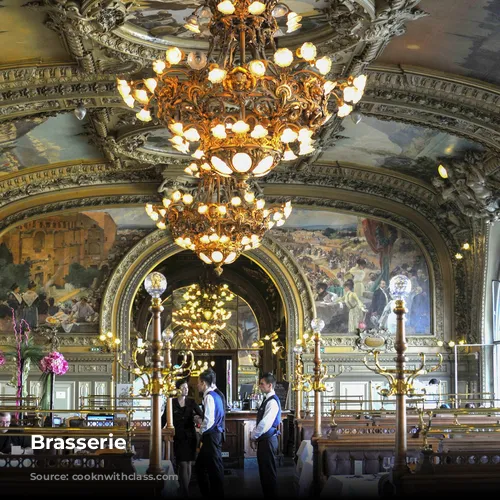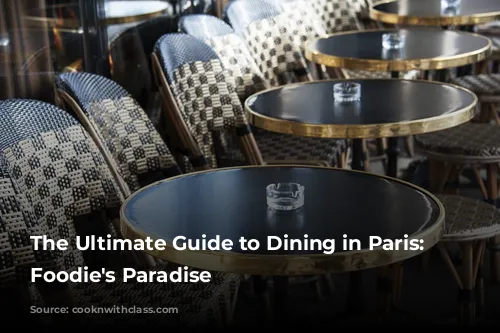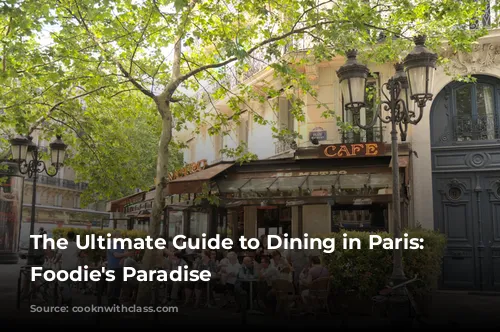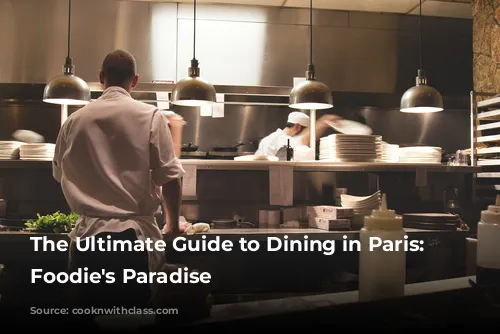It’s a universal truth: vacationing often involves a constant struggle to find the perfect place to eat. Sometimes you get lucky, stumbling upon a gem that not only serves up delicious food but also offers a welcoming atmosphere. But in a city like Paris, where culinary excellence abounds, navigating the dining scene can be a delicious yet daunting adventure. Fear not, fellow food enthusiasts! This guide offers a roadmap for navigating Paris’s diverse culinary landscape, guaranteeing a memorable gastronomic journey.

Planning Ahead: Navigating the Parisian Dining Scene
For those who live to eat (like yours truly!), a vacation is an opportunity to immerse oneself in a new culture through its flavors. Before even cracking open a travel guide to explore the Eiffel Tower or Louvre, I typically secure lunch or dinner reservations, plan a food tour, or explore local markets. This may sound extreme, but I’m certain fellow food lovers will relate!
Paris, being the culinary capital it is, demands a bit of advanced planning. Unlike many restaurants around the world, finding online reservation systems can be tricky. Time zones can also pose a challenge when trying to book a table from afar. But fear not, there are ways to make the process a lot smoother!

Decoding the French Restaurant Landscape
To navigate the Parisian dining scene, understanding the different types of restaurants is essential. Think of them as stepping stones on a delicious culinary journey, each offering a unique experience.
Cafés: The Heart of Parisian Life
Cafés are the most casual eateries in France, serving coffee and light meals throughout the day. Don’t expect haute cuisine here; think classic croque monsieurs, simple salads, and delightful pastries. While cafés offer a quick bite or a relaxing coffee break, the focus is on nourishment rather than a gourmet experience. Pro tip: always order your coffee at the bar for a more authentic French experience and a slightly cheaper price.
Bistros: Where French Tradition Meets Comfort
Legend has it that the word “bistro” comes from the Russian word for “quick,” and these establishments truly embody the original fast food of France, albeit with a distinctly French touch. Once serving long-cooked, hearty stews to the working class, bistros have evolved into cozy and inviting spaces offering classic French fare. While some bistros may be more modern or elaborate, they still maintain the essence of simplicity and comfort.
Brasseries: A Feast for the Senses
The word “brasserie” literally means “brewery,” and these vibrant, well-lit restaurants once brewed their own beer. Today, they are synonymous with casual dining, serving a wider variety of dishes than bistros. Think oysters, fresh seafood, grilled steaks, and traditional French salads, all prepared with care and quality. Brasseries offer an all-day dining experience, often staying open late into the night. Beyond the delectable food, brasseries provide a unique ambiance, perfect for people-watching and soaking up the Parisian energy.
Restaurants: The Pinnacle of Culinary Excellence
For a truly refined dining experience, “restaurants” stand at the top of the French culinary hierarchy. Emerging in the 18th century, these establishments were originally reserved for the elite. Expect the finest food, meticulously crafted menus, and highly skilled chefs. These are the iconic white tablecloth institutions, embodying the grandeur of French dining. While Michelin-starred restaurants offer a world-class experience, even those with 1 or 2 stars often offer exceptional value, especially during lunch.

Booking Your Table: Securing the Perfect Dining Experience
Booking a table in advance is essential for a smooth and enjoyable dining experience in Paris. Don’t rely on luck to snag a table at a coveted bistro; plan ahead to avoid disappointment.
The Art of the Reservation
- Call in Advance: This is the most crucial step. Most restaurants, especially popular ones, require reservations, and calling a day or even a week in advance is essential. Weekday dinner reservations may be more manageable, but it’s always best to be prepared. Hotels can often assist with booking reservations if you’re staying there.
- Michelin-Starred Restaurants: For these prestigious establishments, book at least a month in advance, as tables fill up quickly.
- Calling Timing: To increase your chances of getting through, call during non-peak hours, such as between services or just before lunch starts.
Understanding the French Dining Rhythm
- Early Bird Gets the Worm (But Not Always): While arriving early may sound ideal, be mindful that restaurants often don’t open for lunch until 12:30 p.m. However, arriving too early may mean you’ll be the only one in the restaurant while staff finishes up their lunch.
- Dinner Timing: Dinner in Paris typically starts later, around 7:30 p.m. or even 8:00 p.m. Calling before 7:30 p.m. might raise eyebrows, as most restaurants won’t be ready to serve until later.
- No Rush: In France, dining out is about savoring the experience, so relax and enjoy the leisurely pace.

Beyond the Menu: Navigating French Cuisine
- Embrace the Language: While some restaurants may offer English menus, many do not, especially those with changing menus. Don’t be afraid to ask questions; the server likely speaks better English than the menu suggests.
- Time to Indulge: Allow at least two hours for lunch and 2-3 hours for dinner. You won’t be rushed, so savor every bite and conversation.

Conclusion: A Culinary Adventure Awaits
Paris offers a diverse culinary landscape, catering to every taste and budget. With a bit of planning and a willingness to embrace the local dining rhythm, you’ll embark on a gastronomic adventure that will leave you with unforgettable memories. So, pack your appetite, embrace the Parisian spirit, and prepare to be charmed by the magic of French cuisine!












